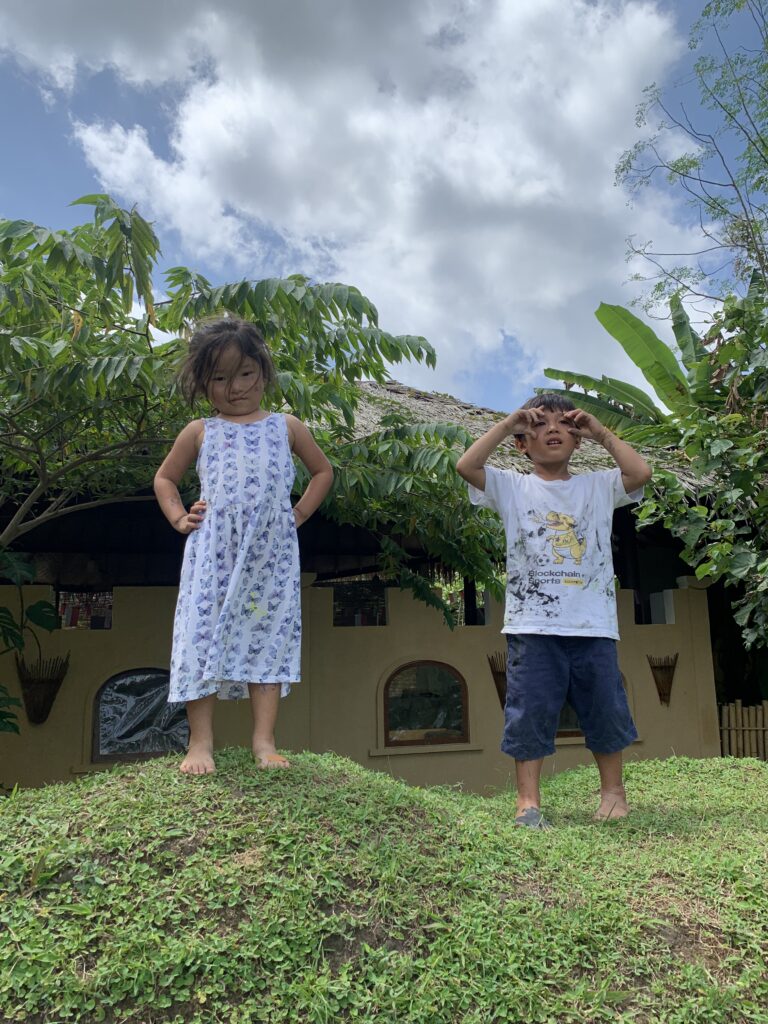In the world of education, Empathy School redefined the concept of a classroom. It’s a place where the boundaries between indoors and outdoors blur, where the walls that confine traditional learning spaces give way to the vast expanse of nature.
The variety of classroom environments
This is a school where classrooms are as varied as the landscape itself, ranging from mostly open to partially open, tailored to suit the environment, the terrain, and the age of the students. The goal here is simple yet profound: to intertwine the science of learning with the natural world, ensuring that students not only bask in the richness of nature but also embrace a sense of relaxation and joy in their educational journey.
But this approach is not just about creating a pleasant learning environment. There’s a deeper, scientific rationale behind it. Consider sunlight, that omnipresent force that bathes our planet in energy. When sunlight kisses the skin, it triggers the production of vitamin D, a compound that’s not just a vitamin but a vital player in our immune system. Without sufficient vitamin D, our immune defenses falter, leaving us more susceptible to infections and diseases. In this way, the open classrooms of this innovative school do more than just provide a breath of fresh air; they act as a natural fortification for the students’ health.
Furthermore, sunlight acts as a natural disinfectant. Bacteria and viruses, those invisible invaders that threaten our well-being, find it hard to survive when exposed to the sun’s rays.
Thus, surfaces that children touch and interact with in these open classrooms are continuously sterilized by the sun, adding an extra layer of protection to their learning environment.
In essence, this school’s philosophy of open classrooms is a testament to the harmony between nature and science. It’s a reminder that sometimes, the best way to enhance learning and well-being is not through more technology or stricter regulations, but by embracing the simplicity and power of the natural world.
Intriguingly, this school, with its open classrooms and abundance of sunlight, seems to have sidestepped a common ailment that plagues many educational institutions: the flu season. In more traditional, enclosed settings, flu season is almost a given, a time when the air becomes a carrier of illness, circulating and recirculating the same contaminated breaths. Once one child falls ill, the stagnant air becomes a breeding ground for the virus, leading to a domino effect of sickness.
However, in this unique environment, such a phenomenon is notably absent. The reasons for this are multifaceted and perhaps not entirely clear-cut. Certainly, the emphasis on physical fitness plays a role, as a healthy body is better equipped to ward off infections. But the standout factors appear to be the sunlight and the open-air classrooms. The sunlight, with its natural sterilizing properties, ensures that surfaces are less likely to harbor harmful pathogens. Meanwhile, the open classrooms facilitate a constant flow of air, preventing the stagnation that allows viruses to thrive.
The absence of a flu season on this campus is a testament to the school’s innovative approach to education. It’s a reminder that sometimes, the best defense against illness is not just medicine or vaccines, but a harmonious relationship with the natural world.


 Previous Post
Previous Post
Leave Your Comment